Themed collection 2016 most accessed Catalysis Science and Technology articles

Room-temperature catalytic oxidation of formaldehyde on catalysts
Room-temperature catalytic oxidative decomposition of harmful formaldehyde (HCHO) in indoor air is summarized.

Catal. Sci. Technol., 2016,6, 3649-3669
https://doi.org/10.1039/C6CY00062B
Solvent effects in catalysis: rational improvements of catalysts via manipulation of solvent interactions
The interactions of solvents with catalysts, substrates and products all influence the rate and selectivity of reactions and should be considered to ensure a reaction is run under optimum conditions.

Catal. Sci. Technol., 2016,6, 3302-3316
https://doi.org/10.1039/C5CY02197A
Disruptive catalysis by zeolites
Emerging concepts and novel possibilities in catalysis by zeolites for a new scenario in chemical and energy vector production.
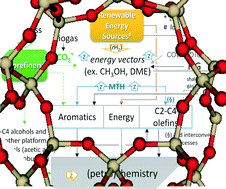
Catal. Sci. Technol., 2016,6, 2485-2501
https://doi.org/10.1039/C5CY02184G
Two-dimensional zeolites in catalysis: current status and perspectives
Two-dimensional zeolites have been studied and developed as diverse and fundamentally new forms of 3D framework structures.
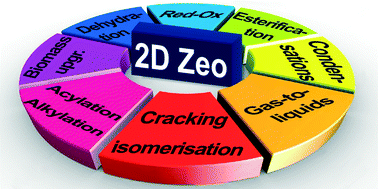
Catal. Sci. Technol., 2016,6, 2467-2484
https://doi.org/10.1039/C5CY02079D
When CuAAC 'Click Chemistry' goes heterogeneous
Within the green chemistry context, heterogeneous catalysis is more and more applied to organic synthesis. The well known ‘click chemistry’ and especially its flagship, the copper-catalyzed azide–alkyne cycloaddition reaction (CuAAC), is now catch up by such heterogenisation process and copper ions or metals have been grafted or deposited on or into various solids, such as (bio)polymers, charcoal, silica, zeolites, POM or MOF.
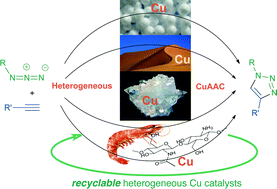
Catal. Sci. Technol., 2016,6, 923-957
https://doi.org/10.1039/C5CY01847A
Catalytic deoxygenation on transition metal carbide catalysts
We highlight the evolution and tunability of catalytic function of transition metal carbides under oxidative and reductive environments for selective deoxygenation reactions.
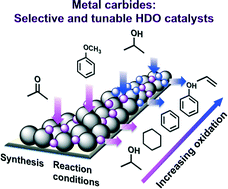
Catal. Sci. Technol., 2016,6, 602-616
https://doi.org/10.1039/C5CY01665G
Metal nanoparticle photocatalysts: emerging processes for green organic synthesis
Metal nanoparticles (Au, Ag, Cu, Pd, Pt, Ir, Rh, Au–Pd alloy etc.) supported on inert support (ZrO2, zeolite) can be direct photocatalysts to series of organic synthesis with visible light irradiation.
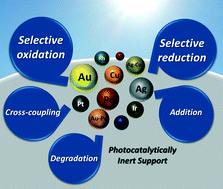
Catal. Sci. Technol., 2016,6, 320-338
https://doi.org/10.1039/C5CY02048D
Hydrogen energy future with formic acid: a renewable chemical hydrogen storage system
Formic acid, the simplest carboxylic acid, could serve as one of the better fuels for portable devices, vehicles and other energy-related applications in the future.
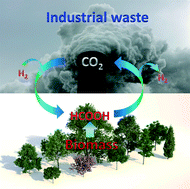
Catal. Sci. Technol., 2016,6, 12-40
https://doi.org/10.1039/C5CY01276G
One-pot catalytic conversion of carbohydrates into furfural and 5-hydroxymethylfurfural
Recently, there has been growing interest in the transformation of renewable biomass into value-added chemicals and biofuels.

Catal. Sci. Technol., 2016,6, 3694-3712
https://doi.org/10.1039/C6CY00384B
Nitrogen-doped porous carbon materials: promising catalysts or catalyst supports for heterogeneous hydrogenation and oxidation
Developing novel and efficient catalysts is a critical step in common heterogeneous hydrogenation and oxidation reactions.

Catal. Sci. Technol., 2016,6, 3670-3693
https://doi.org/10.1039/C6CY00544F
Pt-free silver nanoalloy electrocatalysts for oxygen reduction reaction in alkaline media
Silver nanoalloy electrocatalysts with comparable activity and better stability than commercial Pt/C for oxygen reduction reaction (ORR) in advanced metal–air batteries and fuel cells.
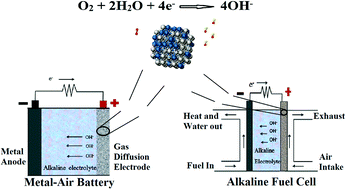
Catal. Sci. Technol., 2016,6, 3317-3340
https://doi.org/10.1039/C5CY02270C
Metal-supported carbon-based materials: opportunities and challenges in the synthesis of valuable products
We summarize relevant applications and limitations of metal-supported carbons and nanocarbons in the synthesis of valuable products and the recent advances in this field.

Catal. Sci. Technol., 2016,6, 1265-1291
https://doi.org/10.1039/C5CY01437A
Ceria-based catalysts for low-temperature selective catalytic reduction of NO with NH3
Low-temperature NH3-SCR has attracted considerable attention owing to the vast demand in industrial furnaces and its energy-conserving feature. This review summarizes the recent advances in the application of ceria-based catalysts for low-temperature NH3-SCR.
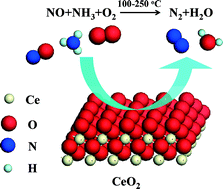
Catal. Sci. Technol., 2016,6, 1248-1264
https://doi.org/10.1039/C5CY01487E
Asymmetric cycloaddition reactions catalyzed by bifunctional thiourea and squaramide organocatalysts: recent advances
In this review, the recent developments in the field of enantioselective cycloaddition reactions using powerful bifunctional amine-thiourea and amine-squaramide organocatalysts have been described.
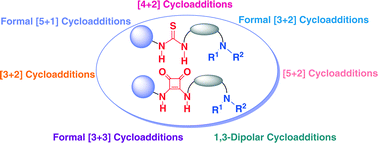
Catal. Sci. Technol., 2016,6, 645-667
https://doi.org/10.1039/C5CY01894C
Things go better with coke: the beneficial role of carbonaceous deposits in heterogeneous catalysis
Carbonaceous deposits on heterogeneous catalysts are traditionally associated with catalyst deactivation. However, they can play a beneficial role in many catalytic processes, e.g. dehydrogenation, hydrogenation, alkylation, isomerisation, Fischer–Tropsch, MTO etc. This review highlights the role and mechanism by which coke deposits can enhance catalytic performance.
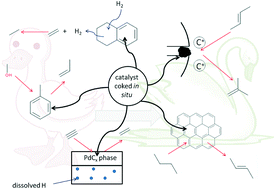
Catal. Sci. Technol., 2016,6, 363-378
https://doi.org/10.1039/C5CY01236H
The application of heterogeneous visible light photocatalysts in organic synthesis
The recent advances of organic synthesis reactions based on heterogeneous visible-light photocatalysis are reviewed.
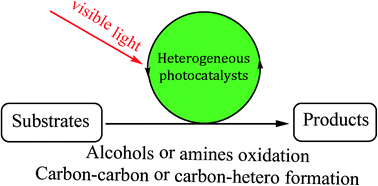
Catal. Sci. Technol., 2016,6, 349-362
https://doi.org/10.1039/C5CY01289A
Iron bis(oxazoline) complexes in asymmetric catalysis
Asymmetric reactions catalyzed by iron complexes have attracted considerable attention because iron is a ubiquitous, inexpensive, and environmentally benign metal. This overview charts the development and application of chiral iron bis(oxazoline) and pyridine-2,6-bis(oxazoline) catalysts through their most prominent and innovative uses in asymmetric catalysis, especially in Lewis acid and oxidation catalysis.
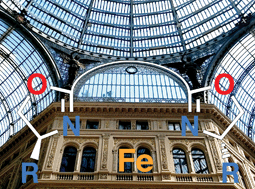
Catal. Sci. Technol., 2016,6, 41-48
https://doi.org/10.1039/C5CY01357G
Nitrogen oxide removal over hydrotalcite-derived mixed metal oxides
Rigorous regulations of nitrogen oxide emissions require the development of technologies for their removal from exhaust gases.
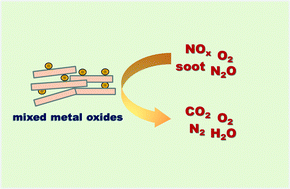
Catal. Sci. Technol., 2016,6, 49-72
https://doi.org/10.1039/C5CY00646E
Hierarchical mesoporous Pd/ZSM-5 for the selective catalytic hydrodeoxygenation of m-cresol to methylcyclohexane
Mesopore incorporation into ZSM-5 enhances the dispersion of Pd nanoparticles significantly accelerating m-cresol conversion relative to a conventional microporous ZSM-5, and dramatically increasing selectivity towards the desired methylcyclohexane deoxygenated product.
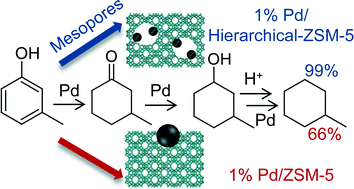
Catal. Sci. Technol., 2016,6, 2560-2564
https://doi.org/10.1039/C5CY02072G
An N-heterocyclic carbene based MOF catalyst for Sonogashira cross-coupling reaction
The post-synthetic modification of azolium containing MOFs generated a new heterogeneous N-heterocyclic carbene catalyst (1-Pd), which is very active for Sonogashira cross coupling reaction.
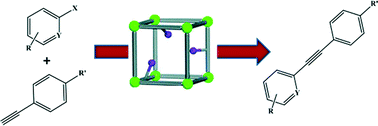
Catal. Sci. Technol., 2016,6, 2050-2054
https://doi.org/10.1039/C5CY01944C
Facet-dependent catalytic activity of ZIF-8 nanocubes and rhombic dodecahedra based on tracing substrate diffusion in pores by SERS: a case study for surface catalysis of MOFs
We employed ZIF-8 rhombic dodecahedra and nanocubes as catalysts to obtain insights into the surface catalysis of MOFs based on facet-dependent catalytic activity for Knoevenagel condensation.
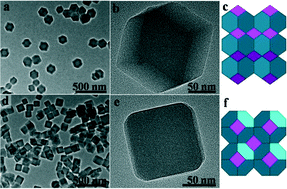
Catal. Sci. Technol., 2016,6, 1616-1620
https://doi.org/10.1039/C5CY01882J
Hydrangea-like NiCo2S4 hollow microspheres as an advanced bifunctional electrocatalyst for aqueous metal/air batteries
Hydrangea-like NiCo2S4 hollow microspheres are proposed as an advanced electrocatalyst for both oxygen reduction and evolution reactions.
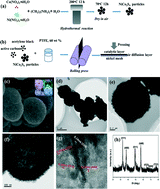
Catal. Sci. Technol., 2016,6, 434-437
https://doi.org/10.1039/C5CY01656H
Metal-free oxidative phosphinylation of aryl alkynes to β-ketophosphine oxides via visible-light photoredox catalysis
A visible-light-induced oxidative phosphinylation of arylacetylenes catalyzed by an inexpensive organic dye was demonstrated to be effective under mild conditions.

Catal. Sci. Technol., 2016,6, 413-416
https://doi.org/10.1039/C5CY01541C
Hydrogenation of CO2 to formic acid with iridiumIII(bisMETAMORPhos)(hydride): the role of a dormant fac-IrIII(trihydride) and an active trans-IrIII(dihydride) species
Catalytic hydrogenation of CO2 to formate with an IrIII(METAMORPhos) complex in the presence of DBU requires a trans-dihydride for catalytic turnover, with an off-cycle trihydride as the dormant species.

Catal. Sci. Technol., 2016,6, 404-408
https://doi.org/10.1039/C5CY01476J
Direct dehydration of 1,3-butanediol into butadiene over aluminosilicate catalysts
The catalytic dehydration of 1,3-butanediol into butadiene was investigated over various aluminosilicates with different SiO2/Al2O3 ratios and pore architectures.
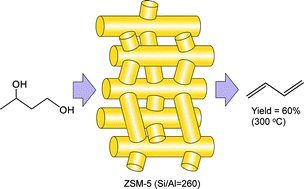
Catal. Sci. Technol., 2016,6, 5830-5840
https://doi.org/10.1039/C5CY02211H
Active phase distribution changes within a catalyst particle during Fischer–Tropsch synthesis as revealed by multi-scale microscopy
A new combination of three chemical imaging methods has been developed and applied to fresh and spent co-based Fischer–Tropsch catalysts.
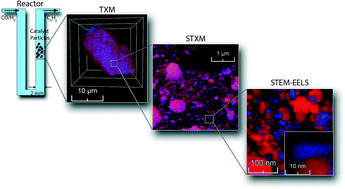
Catal. Sci. Technol., 2016,6, 4438-4449
https://doi.org/10.1039/C5CY01524C
Methanol-to-olefins process over zeolite catalysts with DDR topology: effect of composition and structural defects on catalytic performance
The effect of physicochemical properties on catalyst deactivation, overall olefin selectivity and ethylene/propylene ratio during the methanol-to-olefins (MTO) reaction is presented for two zeolites with the DDR topology, Sigma-1 and ZSM-58.
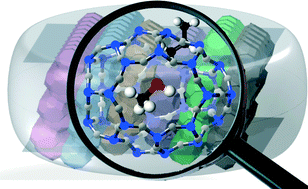
Catal. Sci. Technol., 2016,6, 2663-2678
https://doi.org/10.1039/C5CY02140E
Hydrogen evolution catalyzed by cobalt-promoted molybdenum phosphide nanoparticles
Co-promoted molybdenum phosphide nanoparticles have been successfully prepared and explored for the first time as a cost-effective electrocatalyst for hydrogen evolution reaction (HER).
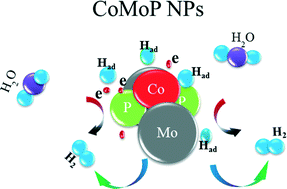
Catal. Sci. Technol., 2016,6, 1952-1956
https://doi.org/10.1039/C5CY01457C
Reversible cyclometalation at RhI as a motif for metal–ligand bifunctional bond activation and base-free formic acid dehydrogenation
The first example of base-free catalytic dehydrogenation of formic acid using reversible cyclometalation at Rh(I) is discussed, using a combination of experimental and computational methods.
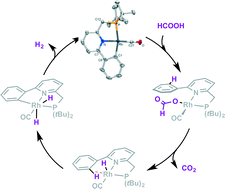
Catal. Sci. Technol., 2016,6, 1320-1327
https://doi.org/10.1039/C5CY01505G
Microwave-assisted synthesis of porous Mn2O3 nanoballs as bifunctional electrocatalyst for oxygen reduction and evolution reaction
A facile and effective microwave-assisted route has been developed to synthesize electrochemically active pure and transition metal-doped manganese oxide nanoballs for fuel cell applications.
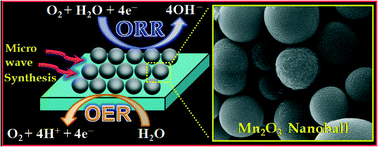
Catal. Sci. Technol., 2016,6, 1417-1429
https://doi.org/10.1039/C5CY01264C
Nickel sulfides for electrocatalytic hydrogen evolution under alkaline conditions: a case study of crystalline NiS, NiS2, and Ni3S2 nanoparticles
Electrocatalytic water splitting to produce H2 plays an important role in the capture, conversion, and storage of renewable energy sources, such as solar energy and wind power.
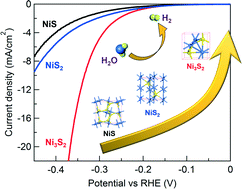
Catal. Sci. Technol., 2016,6, 1077-1084
https://doi.org/10.1039/C5CY01111F
Theoretical insight on reactivity trends in CO2 electroreduction across transition metals
Density Functional Theory (DFT) based models have been widely applied towards investigating and correlating the reaction mechanism of CO2 electroreduction (ER) to the activity and selectivity of potential electrocatalysts.
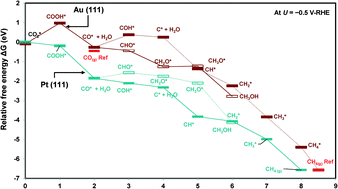
Catal. Sci. Technol., 2016,6, 1042-1053
https://doi.org/10.1039/C5CY01339A
Structure–performance relationships of Cr/Ti/SiO2 catalysts modified with TEAl for oligomerisation of ethylene: tuning the selectivity towards 1-hexene
Ethylene oligomerisation properties of TEAl-modified Cr/Ti/SiO2 ethylene polymerisation Phillips-type catalysts studied with in situ UV-vis-NIR diffuse reflectance spectroscopy, mass spectrometry and gas chromatography.
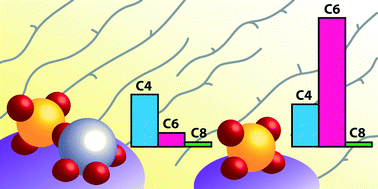
Catal. Sci. Technol., 2016,6, 731-743
https://doi.org/10.1039/C5CY01512J
Preparation of high oxygen storage capacity and thermally stable ceria–zirconia solid solution
Ce0.5Zr0.5O2 prepared by the complexing–coprecipitation method (CZ-2) exhibits higher oxygen storage capacity (OSC) and thermal stability than that prepared by coprecipitation (CZ-1) or the complexing–coprecipitation-solution (CZ-3) method. After being aged at 1100 °C for 6 h, CZ-2a exhibited the highest OSC and catalytic activity.
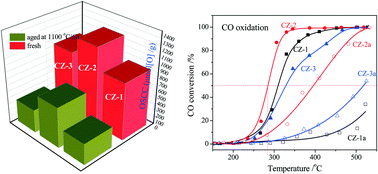
Catal. Sci. Technol., 2016,6, 897-907
https://doi.org/10.1039/C5CY01571E
Towards efficient catalysts for the oxidative dehydrogenation of propane in the presence of CO2: Cr/SiO2 systems prepared by direct hydrothermal synthesis
CrOx/SiO2 catalysts with high propene/olefin yield, stable towards irreversible deactivation, are proposed for the oxidative dehydrogenation of propane with CO2.
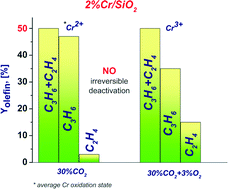
Catal. Sci. Technol., 2016,6, 840-850
https://doi.org/10.1039/C5CY00998G
In situ spectroscopic investigations of MoOx/Fe2O3 catalysts for the selective oxidation of methanol
Methoxy adsorbed on MoOx/Fe2O3 surfaces.
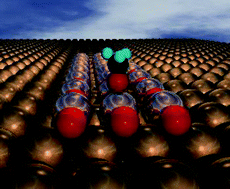
Catal. Sci. Technol., 2016,6, 722-730
https://doi.org/10.1039/C5CY01175B
Ru/TiO2-catalysed hydrogenation of xylose: the role of the crystal structure of the support
Lattice matching holds the secret to the Ru-catalysed hydrogenation of xylose to xylitol, a key reaction in practical biomass conversion.

Catal. Sci. Technol., 2016,6, 577-582
https://doi.org/10.1039/C5CY01005E
The mechanism and material aspects of a novel Ag2O/TiO2 photocatalyst active in infrared radiation for water splitting
IR photon-initiated photocatalytic hydrogen production of the Ag2O/TiO2 catalyst is demonstrated and the functions of Ag2O and TiO2 in “dark photocatalysis” are discussed.
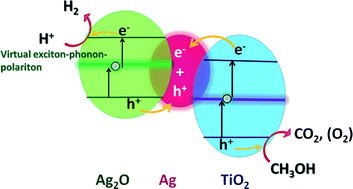
Catal. Sci. Technol., 2016,6, 479-487
https://doi.org/10.1039/C5CY01002K
Photodeposition as a facile route to tunable Pt photocatalysts for hydrogen production: on the role of methanol
Pt photodeposition over titania in the presence of high methanol concentrations promotes the genesis of highly dispersed, metallic nanoparticles, active for photocatalytic hydrogen production.
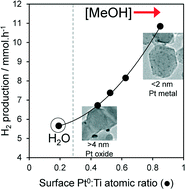
Catal. Sci. Technol., 2016,6, 81-88
https://doi.org/10.1039/C5CY01364J
Pd–Ru/TiO2 catalyst – an active and selective catalyst for furfural hydrogenation
The selective hydrogenation of furfural at ambient temperature has been investigated using a Pd/TiO2 catalyst.
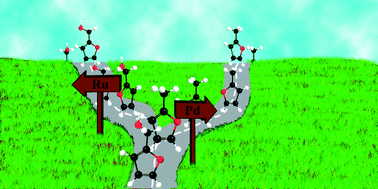
Catal. Sci. Technol., 2016,6, 234-242
https://doi.org/10.1039/C5CY01650A
Light-driven biocatalytic reduction of α,β-unsaturated compounds by ene reductases employing transition metal complexes as photosensitizers
Efficient and cost effective nicotinamide cofactor regeneration is essential for industrial-scale bio-hydrogenations employing flavin-containing biocatalysts such as the Old Yellow Enzymes.
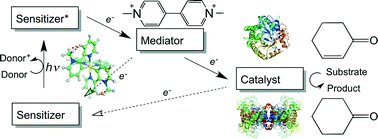
Catal. Sci. Technol., 2016,6, 169-177
https://doi.org/10.1039/C5CY01642H
Molybdenum-doped α-MnO2 as an efficient reusable heterogeneous catalyst for aerobic sulfide oxygenation
In the presence of Mo6+-doped α-MnO2 (Mo–MnO2), various sulfides could efficiently be oxidized to the corresponding sulfoxides as the major products. In addition, Mo–MnO2 could repeatedly be reused.
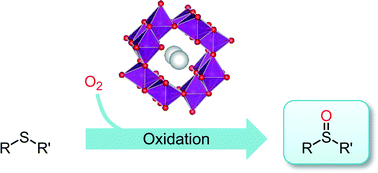
Catal. Sci. Technol., 2016,6, 222-233
https://doi.org/10.1039/C5CY01552A
Co(II) complexes loaded into metal–organic frameworks as efficient heterogeneous catalysts for aerobic epoxidation of olefins
An efficient cobalt(II)-anchored Cr-MOF (Cr-MIL-101-NH2) catalyst, Co(II)@Cr-MIL-101-P2I, has been successfully synthesized by one-pot modification of the terminal amino group with pyridine-2-aldehyde and anchoring of Co(II) ions into the mesoporous Cr-MOF support.
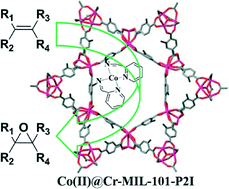
Catal. Sci. Technol., 2016,6, 161-168
https://doi.org/10.1039/C5CY01099C
Highly selective oxidation of cyclohexene to 2-cyclohexene-1-one in water using molecular oxygen over Fe–Co–g-C3N4
The Fe–Co–g-C3N4 catalyst is highly effective for the selective oxidation of cyclohexene to 2-cyclohexene-1-one using oxygen in water.
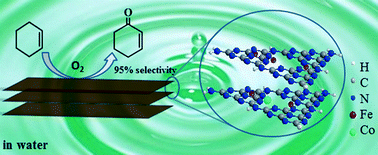
Catal. Sci. Technol., 2016,6, 193-200
https://doi.org/10.1039/C5CY01177A
Aqueous-phase reforming of crude glycerol: effect of impurities on hydrogen production
Fatty acid salt contaminants proved detrimental for efficient hydrogen production in the aqueous phase reforming of an industrial crude glycerol.
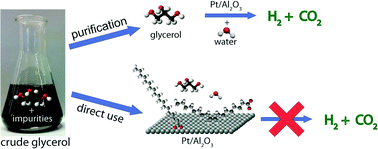
Catal. Sci. Technol., 2016,6, 134-143
https://doi.org/10.1039/C4CY01711K
Enhancing internal mass transport in Fischer–Tropsch catalyst layers utilizing transport pores
A one-dimensional model of Fischer–Tropsch catalyst layers is used for optimization of layer thickness and transport pore fraction to avoid diffusive restrictions and improve productivity.
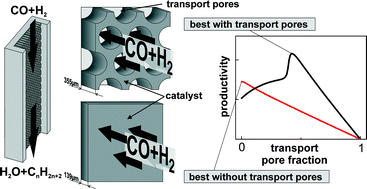
Catal. Sci. Technol., 2016,6, 275-287
https://doi.org/10.1039/C5CY00957J
Base-free oxidation of glucose to gluconic acid using supported gold catalysts
1% Au/TiO2 catalysts prepared by a variety of methods were studied for the base-free oxidation of glucose.
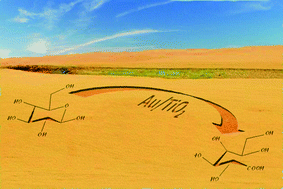
Catal. Sci. Technol., 2016,6, 107-117
https://doi.org/10.1039/C5CY00732A
Predicting the performance of oxidation catalysts using descriptor models
Mix & match: we show that combining simple heuristic models with experimental validation is an effective method for optimising supported mixed oxide catalysts.
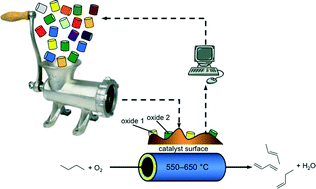
Catal. Sci. Technol., 2016,6, 125-133
https://doi.org/10.1039/C5CY00932D
Enhanced activity of H2O2-treated copper(II) oxide nanostructures for the electrochemical evolution of oxygen
H2O2-treated CuO nanostructures show 40–68× higher OER activity than Cu nanoparticles.
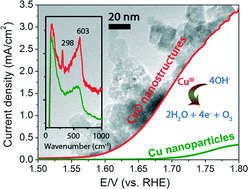
Catal. Sci. Technol., 2016,6, 269-274
https://doi.org/10.1039/C5CY00861A
Simultaneous coking and dealumination of zeolite H-ZSM-5 during the transformation of chloromethane into olefins
Chloromethane conversion into light olefins leads to distinct deactivation pathways in zeolite H-ZSM-5 compounded with bentonite and α-Al2O3 as binder and filler.
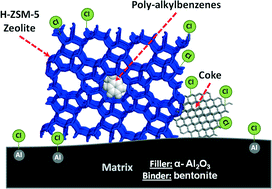
Catal. Sci. Technol., 2016,6, 296-306
https://doi.org/10.1039/C5CY00784D
About this collection
This web collection highlights the top 50 most downloaded articles published in Catalysis Science and Technology in 2016. Congratulations to all of the authors whose artices have been featured.